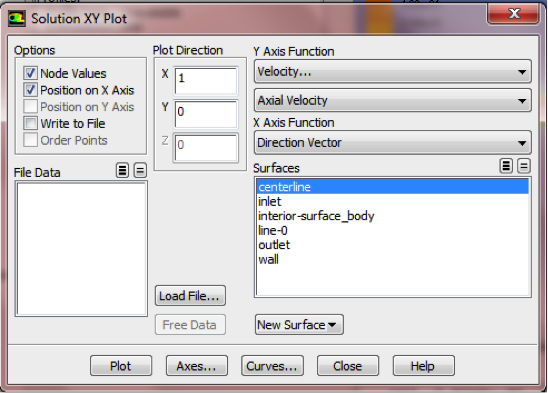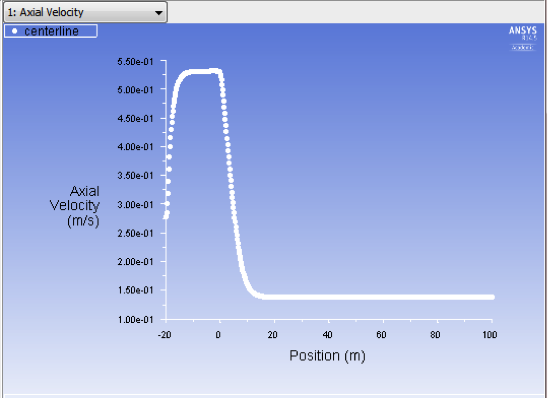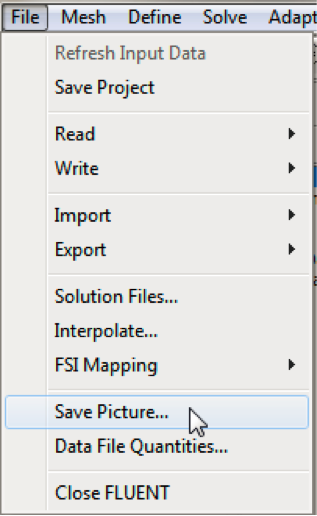...
The laminar pipe flow was modeled asymmetrically; however, the plot can be reflected about the axial axis to get an expanded sectional view. In order to carry this out (Click) Display > Views... as shown below.
Under Mirror Planes, only the axis (or centerline) surface is listed since that is the only symmetry boundary in the present case. Select axis (or centerline) and click Apply, as shown below.
Then click Close to exit the Views menu. Your vector field should have been reflected across the axially axis as, shown below.
The velocity vectors provide a picture of how the flow develops downstream from the inlet and redevelops from the expansion entrance.
...
Here, we'll plot the variation of the axial velocity along the centerline. In order to start the process (Click) Results > Plots > XY Plot... > Set Up.. as shown below
In the Solution XY Plot menu make sure that Position on X Axis is selected, and X is set to 1 and Y is set to 0. This tells FLUENT to plot the x-coordinate value on the abscissa of the graph. Next, select Velocity... for the first box underneath Y Axis Function and select Axial Velocity for the second box. Please note that X Axis Function and Y Axis Function describe the x and y axes of the graph, which should not be confused with the x and y directions of the pipe. Finally, select centerline under Surfaces since we are plotting the axial velocity along the centerline. This finishes setting up the plotting parameters. Your Solution XY Plot should look exactly the same as the following image.
Now, click Plot. The plot of the axial velocity as a function of distance along the centerline now appears.
In the graph that comes up, we can see that the velocity reaches a constant value (about 5.25e-1 m/s) beyond a certain distance from the inlet. This is the fully-developed flow region in the small pipe. When the flow pass the expansion entrance at x=0 m, the velocity will decrease due to the sudden expansion of the pipe. After another development, the velocity will reach a constant value (about 1.5e-1m/s) again.
...
At this point, we'll save a picture of the plot. First click on File then click Save Picture, as shown below.
Under Format, choose one of the following three options: EPS, TIFF, or JPG. After selecting your desired image format and associated options, click on Save... Enter vel.eps, vel.tif, or vel.jpg depending on your format choice and click OK. Verify that the image file has been created in your working directory. You can now copy this file onto a disk or print it out for your records.
...
 Sign-up for free online course on ANSYS simulations!
Sign-up for free online course on ANSYS simulations!





